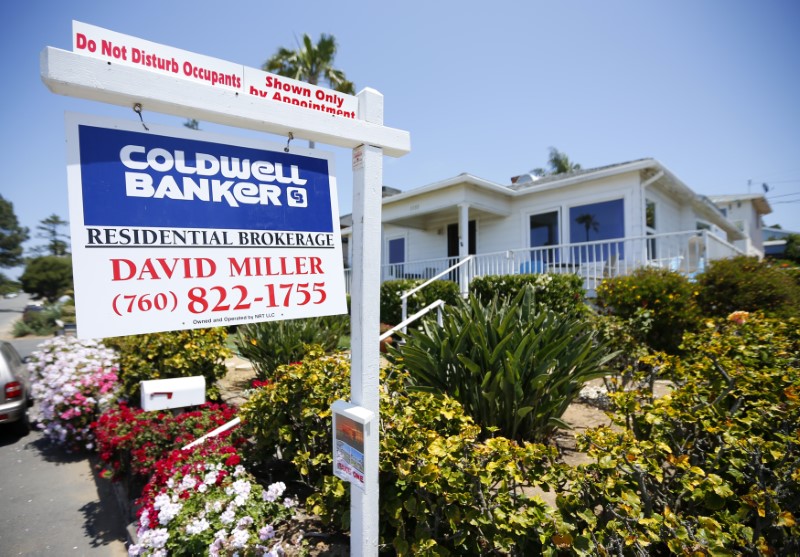By Kimberly Chin
NEW YORK (Reuters) - U.S. single-family home prices rose in April due to tight inventory of houses on the market and low mortgage rates, a survey showed on Tuesday, and economists see no imminent change in the trend.
The S&P CoreLogic Case-Shiller composite index of 20metropolitan areas rose 5.7 percent in April on a year-over-year basis after a 5.9 percent gain in March, which matched the fastest pace in nearly three years. April's result fell short of the 5.9 percent increase forecast in a Reuters poll of economists.
Despite coming in below expectations, David Blitzer, managing director and chairman of the index committee at S&P Dow Jones Indices, said the supply of homes has barely kept up with demand and inventory of new or existing homes for sale had diminished to a 4-month supply. That is likely to keep home prices on the rise.
"We hear that developers are having trouble finding the lots they want and finding the labor they want. With those two constraints, inventory is going to stay tight for a while," said Robert Dye, chief economist at Comerica (NYSE:CMA).
The National Association of Realtors reported last week that the inventory of existing homes available for sale rose in May by 2.1 percent to 1.96 million from the previous month. Still, that was 8.4 percent below last year's level, and inventory has declined for consecutive 24 months on a year-over-year basis.
Prices in the 20 cities covered by Case-Shiller rose 0.3 percent in April after seasonal adjustment, the survey showed, short of expectations for a 0.4 percent increase. On a non-seasonally adjusted basis, prices increased 0.9 percent from March.
Secondary tech hubs like Seattle, Portland and Dallas reported the highest annual gains among the 20 metropolitan areas measured by the index.
"We're getting affordability issues in some markets that have seen an increasing rise in prices," said Scott Anderson, chief economist at Bank of the West, adding that he anticipates moderate home appreciation gains in the future.
Another potential risk is whether interest rate increases from the U.S. Federal Reserve begin to force consumer borrowing costs higher. The Fed has raised short-term rates by 1 percentage point in the past 18 months, but longer-term rates have so far not followed suit as inflation pressures remain subdued.
The average rate on a 30-year fixed-rate mortgage, the most popular U.S. home loan, was 4.13 percent in the latest week, down from 4.47 percent three months earlier, according to the Mortgage Bankers Association.

"It will be interesting to see how robust is the housing market if we were to see mortgage rates in the 5 or 6 percent range," Dye said.